Dog Training How To, Patience, Persistence and the Right Tools.
In dog training as in many things you have to have the right attitude and the right tools (whether they be actual tools or techniques) in order to get the job done. Ask 10 dog trainers how to teach a dog any one specific command or behavior and your likely to get 10 different answers. That’s because dogs, just like people are each unique in how the learn and perceive the world. Some are more outgoing, assertive or confident while others may be shy, introvert even nervous or cautious. Many may be a blend of both confidence and cautiousness.
One style of training doesn’t fit all.
This also doesn’t make any one style right and the others wrong. You also must take into account the owners, as they play a huge role in the dog’s training. Dog’s don’t live in a vacuum. They are affected 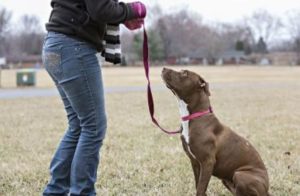 by how they are treated/interacted with/trained and by the behaviors they are allowed to exhibit on a daily basis.
by how they are treated/interacted with/trained and by the behaviors they are allowed to exhibit on a daily basis.
With all that aside, when an owner makes the decision to train their dog many factors need to be taken into account. Such as the relationship the owner has been sharing with the dog. Does the owner share a lot  of “soft energy” with the dog by being permissive, sharing too many treats, allowing the dog to do whatever it wants in many situations and practice negative behaviors? The owner may not even be aware that they have been reinforcing the very behaviors they don’t want.
of “soft energy” with the dog by being permissive, sharing too many treats, allowing the dog to do whatever it wants in many situations and practice negative behaviors? The owner may not even be aware that they have been reinforcing the very behaviors they don’t want.
When it comes time to start the training there are many dog training tools and techniques that can be utilized to influence a change in the dog.
Things such as food training, treats and toys. Tools such as a clicker, collars, 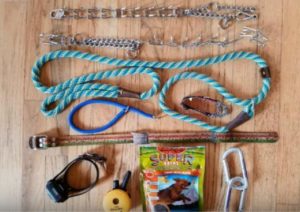 be it flat buckle collars, martingale collars, slip leads, head halters, prong collars and even remote collars. Management tools such as crates, Pet Corrector (canned air), a bonker (rolled up towel), squirt bottle
be it flat buckle collars, martingale collars, slip leads, head halters, prong collars and even remote collars. Management tools such as crates, Pet Corrector (canned air), a bonker (rolled up towel), squirt bottle 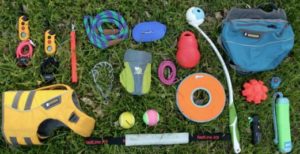 (for play management) and any other creative tools an owner or trainer comes up with!
(for play management) and any other creative tools an owner or trainer comes up with!
Each is an option depending on the situation, the dog, the behaviors and even the owners involved.
Each tool, when used PROPERLY can be utilized to influence a dog, share communication and teach the positive behaviors wanted.
When used properly these tools can be warranted based on what is needed for that particular dog and that particular owner at that particular moment.
The techniques or methods may vary as well. What works with or motivates one dog may not with another. A trainer or owner must be willing to be flexible and problem solve to find what works best with the dog in front of them. Dog training is definitely not one size fits all.
Our duty as dog trainers is not to judge (especially each other) but to help each owner learn how to communicate with their dog.
Teaching the positive behaviors wanted and correcting the unwanted negative behaviors. Thus allowing the dog to remain in the home instead of being given up.
Whatever dog training tools and techniques work for you and your dog are the right ones for you and your dog. Do not ever let anyone tell you otherwise or try to shame you regarding any tools that you use (providing you are using them properly/humanely). Shaming usually comes from people whos dogs are not well behaved anyway!
Patience, persistence and CONSISTENCY also play a huge role in successfully training your dog.
There will be a lot of repetition needed for your dog to absorb the training and create new habits. Therefore you must have a lot of patience while he is learning the new rules. Being consistent is one of the most important things to keep in mind when training your dog. If a dog is getting inconsistent messages such as …
- It’s ok to jump on me the owner but not on peo
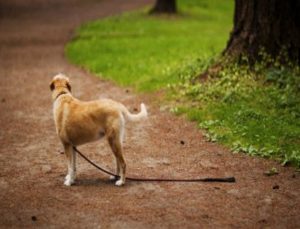 ple entering our home.
ple entering our home. - I won’t reinforce you listening to me consistently but I want you to listen to me when I determine it really matters.
- You can jump on our furniture whenever you feel like it but
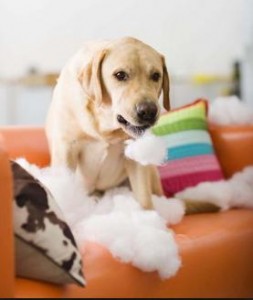 it’s not ok when guests are here.
it’s not ok when guests are here. - You can whine and bark in the crate and I’ll let you out but it’s not ok for you to whine and bark for other things.
- Encouraging excited behavior but then not liking it when the dog acts excited around other people or dogs.
- It’s ok to follow me all around when I’m home but it’s not ok to exhibit separation anxiety when I’m not here and be possessive/protective of me around other people.
(just to name a few) it’s not really fair to expect much of them at all.
Dogs, like children, thrive on structure, boundaries, direction.
Knowing what is expected of them and that the rules are consistent on a daily basis, helps your dog feel safe, happy and balanced.
Patience, persistence, consistency and the right tools all factor into the equation of a happy, balanced, well mannered dog.
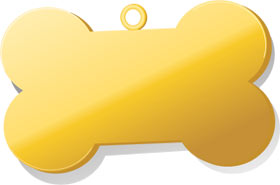










Speak Your Mind